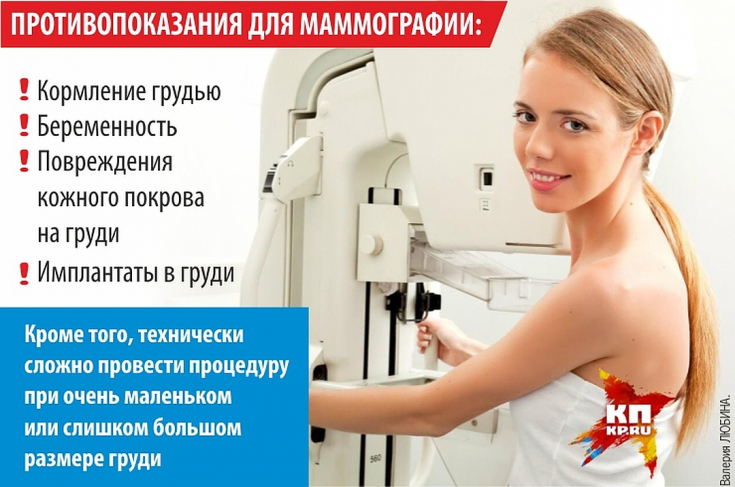Mammography (x-ray examination of the breast) is commonly associated with cancer. And the mere fact of the appointment of this examination causes a panic in a woman.
But in fact, this research method is used for a wide range of indications, and necessary not only for the diagnosis of breast cancer, but and to identify other pathologies and even their prevention.
Let's see when how often a breast mammogram is needed.
When and why breast mammography is prescribed
As early as 20 years ago, mammography was a method of examination mainly for women over 40 years of age. It was this age that was considered the threshold — after it, in connection with the extinction of ovarian functions and a decrease in estrogen levels, the likelihood of the formation of malignant breast tumors increases.
But the environmental situation, the increasingly widespread employment of women in hazardous industries, "fashion" artificial feeding of the baby and other factors led to a significant rejuvenation of breast cancer. And today this disease is often diagnosed in very young girls. Therefore, today the rule about mandatory annual mammograms for women over 40 still applies. But with small clarifications. This research method is needed for women of any age if they are in the high-risk group due to the following circumstances:
-
Residing in environmentally disadvantaged region.
-
Complicated family history (a close relative has been diagnosed with breast cancer).
-
Multiple abortions.
-
Chronic diseases of the reproductive system.
-
Exposure to toxic substances in the professional or daily activities.
-
Night shift work.
-
Taking medications that stimulate or depress the immune system.
Read also: Why nipples hurt: causes and doctors' advice
The above circumstances in no way predict the development of oncological diseases, but require more attention to preventive examinations.
During mammography, the condition of breast tissues is assessed, the presence of any altered areas in them is determined, but most importantly — this diagnostic method allows to identify neoplasms at the stage of their development, when they are not detected by palpation or by other means.

Women who are still afraid of getting mammograms can benefit from statistics. After this diagnostic method was introduced into everyday practice, mortality from breast cancer decreased by more than 40%. This does not mean that mammography can prevent this disease. But it means she can identify the problem at the stage when the treatment is most effective.
Read also: Suppressing the panic: what really shows the analysis for tumor markers
What you need to know before getting a mammogram
First of all, you need to know that this is a completely painless procedure that does not cause inconvenience or discomfort. Exception — if you are scheduled for a mammogram due to complaints of chest pain. In in this case, just warn the doctor who diagnoses — it adjusts the position of the slats between which the breasts are to be placed so that they do not exert undue pressure on the mammary glands.

Also, before you go for a mammogram, refrain from using deodorants, breast skin creams, or other cosmetics. On a mammogram, they can leave spots that can lead to misinterpretation of the results.
The most accurate chest X-ray is between the 5th and 12th day of the menstrual cycle.
In this period, the mammary gland tissues are the least tense and have not yet had time to accumulate excess fluid in themselves. This increases the diagnostic value of the study, since if there are any small neoplasms in the breast, they will be better and more clearly displayed on the image.
Very young women, as well as pregnant and lactating women, are assigned ultrasound first (provided that there are no obvious signs of a possible oncological disease). And based on the results of the ultrasound, the doctor decides on the appointment of mammography, if he sees a need for it.
We hope that this information will help you to cope with anxiety or distrust of mammography, and will allow to take care of your health in time.
Read also: Genetic analysis for breast and ovarian cancer: who should do it
You might be interested in: Abs Workouts.






Add a comment